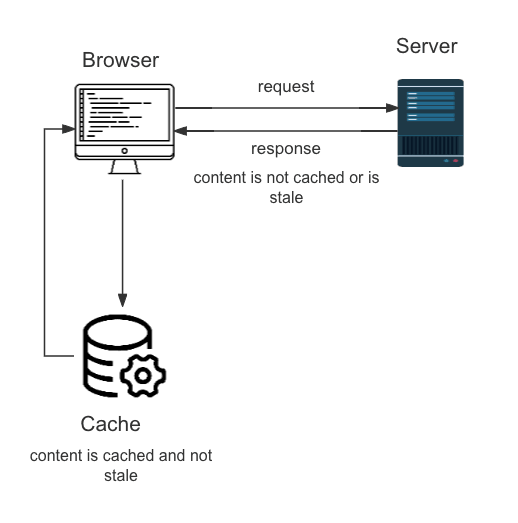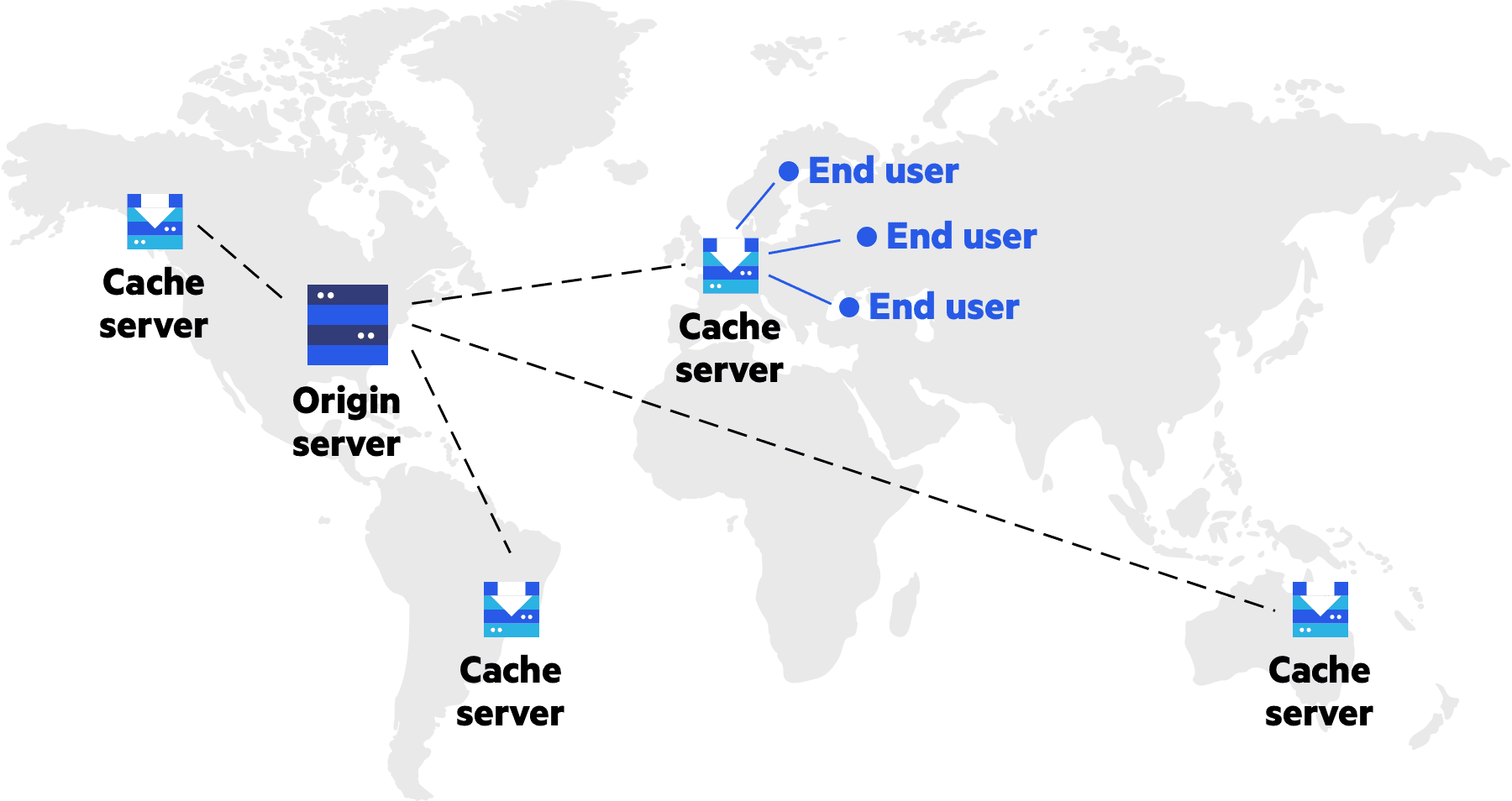What is Caching?
Cache is a hardware or software component that stores data so that future requests for that data can be served faster. When data is repeatedly requested, cache can significantly improve performance and efficiency.
In computer science, cache is often used to store frequently accessed data to reduce access time. For example, web browsers like Chrome or Firefox cache web page content so that when users visit the same web page again, the page can be loaded faster. Operating systems also cache data read from the hard drive so that it can be accessed faster the next time.
The main goal of cache is to store a copy of the data closer to the data requester (usually in terms of physical distance), thereby reducing the time to access the original data source and improving the efficiency of the program.
What is Browser Cache and How it Works?
Browser cache is a technology that stores web page files locally, these files may include HTML files, CSS style sheets, JavaScript scripts, images, and other multimedia content.
When you first visit a webpage, the browser downloads all necessary resources and saves them in the local cache. Then, when you visit the same webpage again, the browser checks whether the resources in the cache are still up-to-date. If they are, the browser will load the resources directly from the cache; if they are not, or if the resources do not exist in the cache, the browser will download new resources from the server. This process is automatic and usually not noticeable to the user.

The Role of Caching
The main functions of browser cache are as follows:
Improve loading speed: When a user visits a cached web page, the browser can load files directly from the local hard drive, without having to request these files from the server again. This greatly reduces the loading time and improves the user experience.
Reduce the use of network bandwidth: By reducing requests to the server, browser cache can help save network bandwidth. This is especially useful for network connections with traffic restrictions.
Reduce server load: Browser cache can reduce the load on the server, as the server does not need to send a full response for each request. This is very important for high-traffic websites.
Offline browsing: In some cases, if a user has visited a page and then lost the network connection, browser cache can allow the user to browse the page offline.
Why You Need to Clear Browser Cache?
Get the latest version of the web page: If the content of the website has been updated, but the browser still loads the old content from the cache, then the user may not be able to see the latest web page content. Clearing the cache ensures that the browser gets the latest content from the server.
Solve loading or formatting problems: Sometimes, cached files may be corrupted or have errors, which may cause the web page to not load or display correctly. In this case, clearing the browser cache may help solve the problem.
Free up storage space: Browser cache takes up space on the computer's hard drive. If your device has limited storage space, regularly clearing the browser cache can help free up some space.
Protect privacy: Browser cache may contain some of your private information, such as login status, browsing history, etc. If you do not want others to access this information, clearing the browser cache can help protect your privacy.
What is CDN Node Cache?
CDN node cache, refers to the cache stored on each node server of the CDN (Content Delivery Network).
In the CDN system, the original content is stored on the source server. When a user first requests a certain content, the nearest CDN node (also known as the edge server) will obtain this content from the source server and then store it locally, which is the so-called CDN node cache. When other users request the same content, the CDN node can directly provide the content from the local cache, without having to obtain it from the source server again, which can greatly improve the loading speed of the content, reduce the burden on the source server, and also improve the availability of the content.

What is CDN Cache Hit and What is Cache Miss?
When the content requested by the user has been cached on the CDN's edge server (also known as the node), then this request is considered a "cache hit". In this case, the edge server can directly provide the cached content to the user, without having to obtain the content from the source server. This can greatly improve the loading speed of the content and improve the user experience.
On the contrary, if the content requested by the user has not been cached on the CDN's edge server, then this request is considered a "cache miss". In this case, the edge server needs to obtain the content from the source server, and then provide the content to the user. This may increase the loading time of the content, because it needs to obtain the content from the source server.
CDN service providers usually strive to optimize their cache policies to improve the cache hit rate, because a high cache hit rate can improve the loading speed of the content, improve the user experience, and also reduce the burden on the source server. EdgeOne can optimize and improve the cache hit rate through the following configuration tuning:
- Adjust node cache TTL configuration
- Custom Cache Key Cache key that points requests of the same type to a cache file
- URL preheating
- Enable cache pre-refresh
- Reasonable use of change mechanisms
Learn more about EdgeOne site acceleration and caching configuration.
Why Recommend Tencent EdgeOne?
Tencent EdgeOne resources are distributed in more than 70 countries and regions, with a total network bandwidth exceeding 400Tbps. It covers more than 3200 acceleration nodes and more than 50 small and medium-sized operator access points worldwide. Each node's storage capacity ranges from 40TB to 1.5PB, and the bandwidth load can reach 40Gbps to over 200Gbps. The huge network effectively improves the access quality of different regions and different operators, and can well cope with traffic bursts.
Please contact us for more information.

